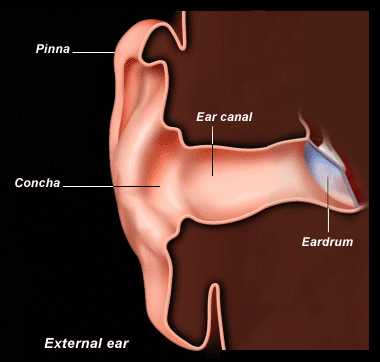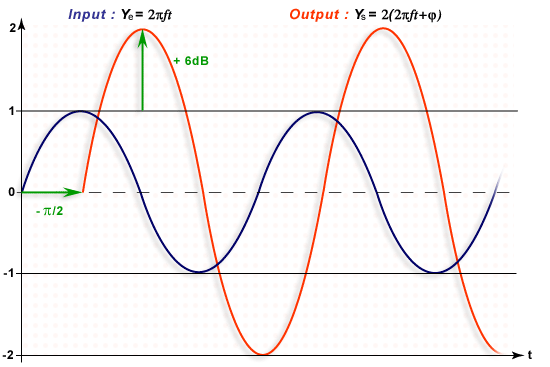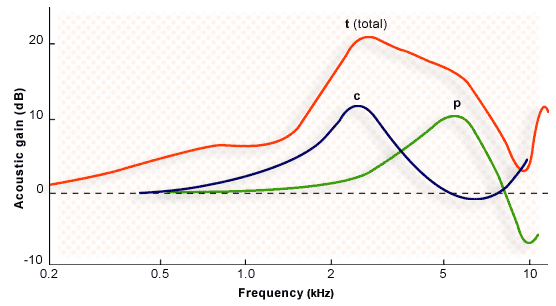| |
|
| Overview / External ear / Middle ear / Inner ear | |
| Scientific concept: A. Dancer ; Drawings : S. Blatrix, P. Minary ; editing: R. Lloyd | |
 |
The external ear
plays the role of an acoustic antenna: the pinna (together with the
head) diffracts and focuses sound waves, the concha and the ear canal
act as a resonator. |
|
Both
the sound pressure levels and the phase of the acoustic waves change
whilst being propagated from the free field environment, via the external
ear, to the eardrum. These changes vary with the frequency of the sound
and for each direction
of the acoustic waves in the horizontal and vertical planes. They correspond to the transfer function (TF) of the external ear. |
 |
|
Ex. Amplitude and phase changes ( transfer function) of a pure tone, output (red) versus input (blue). The signal is amplified by 2 = + 6 dB ; its phase is shifted by - p/2 (phase lag of 90 degrees, or a quarter of a cycle). |
 |
|
Influence of the pinna (p) and of the ear canal (c) on the amplitude of the signal reaching the ear drum (incidence: 45 degrees in the horizontal plane). At 3000 Hz, the final amplification (t) is 20 dB (10 times the free field level). |
 |
|
Result
of the transfer function: for a given acoustic source in the free field,
there is a difference between the two ears in both the sound pressure
level (when f > 500 Hz, see later), and in the phase (or the time
of arrival, see below).
|
 |
|
The
maximum time difference between the ears is 760 microseconds (see later).However,
we are able to pinpoint a sound in front of the head within 1 - 2 degrees.
This corresponds to a time difference of only 13 microseconds. The cells
within the auditory system which analyze acoustic information are sensitive
to these microchanges!
|
